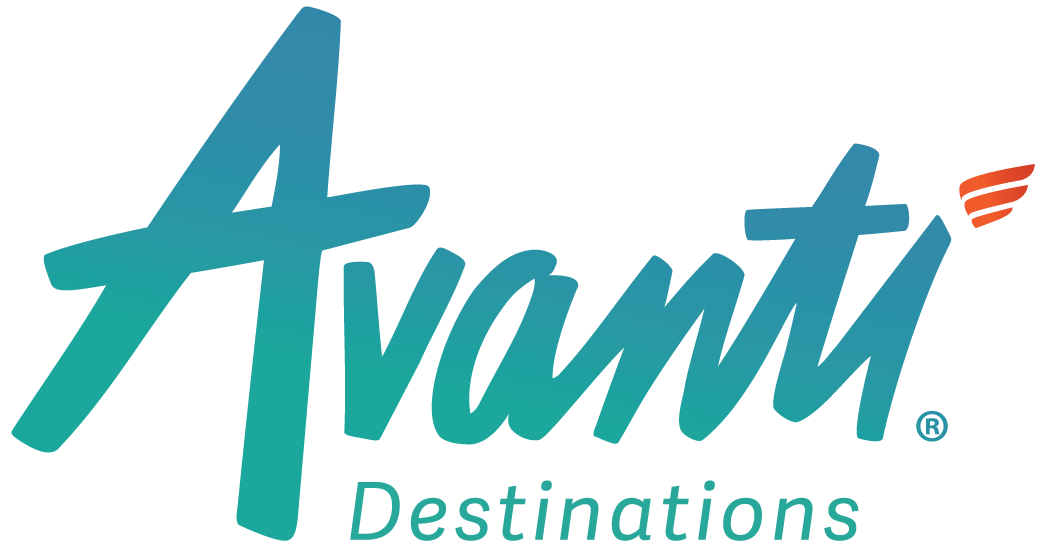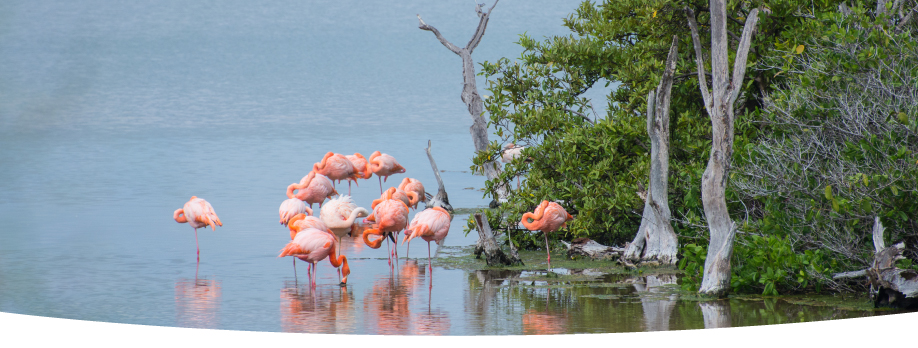

Yacht Natural Paradise:
Cruise B
Cruise B
This brand-new luxury yacht offers large suites, private balconies and a spacious sundeck. 9 cabins.
INCLUSIONS
• Roundtrip Air & Ground Transfers
• Cruise Accommodations
• Cruise Accommodations
• Galapagos National Park Entrance Fee
• Excursions with Naturalist Guide
• All Meals
• All Meals
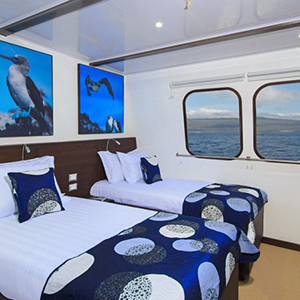
Santa Cruz - Eden Islet
Tuesday:
AM: Flight to Galapagos from Quito/Guayaquil Airport: Upon arrival at Baltra Airport, guides will meet you, collect your luggage, and escort you to the harbor for a short ferry ride to the ship, where the crew will welcome you aboard. After a welcome cocktail and an orientation and safety briefing the cruise begins.
PM: Santa Cruz - Eden Islet: Off the western coast of Santa Cruz Island, Eden Islet offers visitors a great chance to see a variety of Galapagos wildlife from the dinghy ride both on shore and under the water.
(Dinner & Accommodations, Natural Paradise)
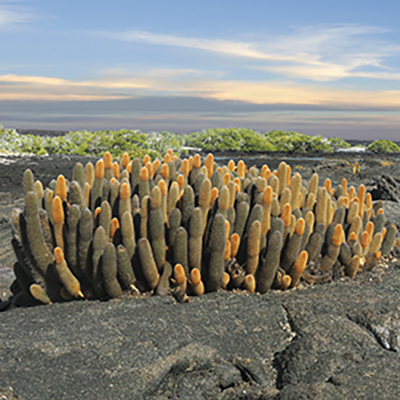
Isabela - Vicente Roca Point - Fernandina- Espinosa Point:
Wednesday:
AM: Isabela - Vicente Roca Point: Located on the northwestern coast of the island and comprised of two separate coves, this site is a large bay with spectacular sea life. Seahorses, sea turtles, and the strange yet fascinating Mola mola (sunfish) may be spotted here. This bay is great for diving and snorkeling.
PM: Fernandina - Espinosa Point: (Dry landing) No foreign species have ever invaded Fernandina Island, and therefore it is one of the world's most pristine island ecosystems. The volcano "La Cumbre" dominates the landscape with lava fields reaching the ocean. This island's highlight is the flightless cormorant nesting site. This area provides a great opportunity to see the Galapagos hawk.
(Breakfast, Lunch, Dinner & Accommodations, Natural Paradise)
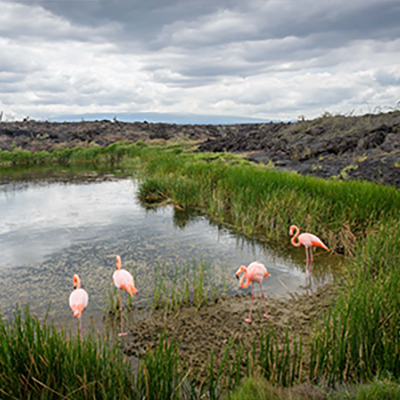
Isabela - Urbina Bay - Moreno Point:
Thursday:
AM: Isabela - Urbina Bay: (Wet landing) Urbina Bay is located at the base of Alcedo Volcano on the west coast between Tagus Cove and Elizabeth Bay. This area experienced a major uplift in 1954 causing the land to rise over 16 feet. The coast expanded half a mile out, leaving marine life stranded on the new shore. This area is also a great place for snorkeling.
PM: Isabela - Moreno Point: (Dry landing) Moreno Point is located near Elizabeth Bay on the west coast of Isabela Island. The plethora of birds seen during a dinghy ride along the striking rocky shores or a hike along path through lava rock leading to tide pools and mangroves are a birdwatcher's delight. In the tide pools, green sea turtles or white-tip sharks can be spotted.
(Breakfast, Lunch, Dinner & Accommodations, Natural Paradise)
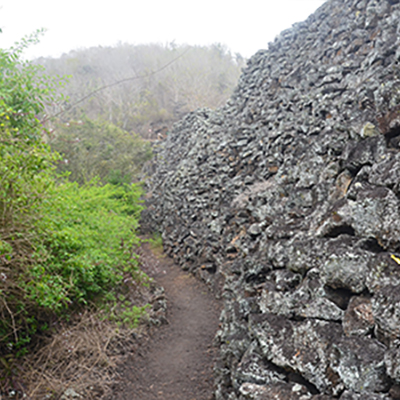
Sierra Negra Volcano - Isabela - Wall of Tears/Wetlands:
Friday:
AM: Sierra Negra Volcano: (Dry landing) The Sierra Negra Volcano boasts the largest basaltic caldera in Galapagos at 9 x 10 km. The site offers impressive views and the opportunity to observe up to 7 species of finch and a rich display of vegetation. The north side of the caldera provides evidence of its most recent volcanic activity in 2005.
PM: Isabela - Wall of Tears/ Wetlands: (Dry landing) From 1945-1959, a penal colony hosted prisoners who were forced to build this wall, stone by stone, in isolation. This now historical site (El Muro de las Lágrimas), towering at 65 feet (25 m) high, took the lives of thousands during its construction. Locals claim to hear cries emanating from the heavy energy surrounding the site.
The Wetlands of Isabela Island are located just outside of Puerto Villamil. The Wetlands consist of lagoons, swamps, and mangroves and are home to a variety of unique bird species such as common stilts, whimbrels, white-cheeked pintails, and gallinules. The Wetlands can be visited on foot via a path that winds through the swamps.
Arnaldo Tupiza Breeding Center: This center was created to protect animals in their first years of life from the threats of foreign species such as pigs and donkeys. Giant tortoise eggs are collected and brought to the center where they are hatched and kept for five years before being released to their natural environment.
(Breakfast, Lunch, Dinner & Accommodations, Natural Paradise)
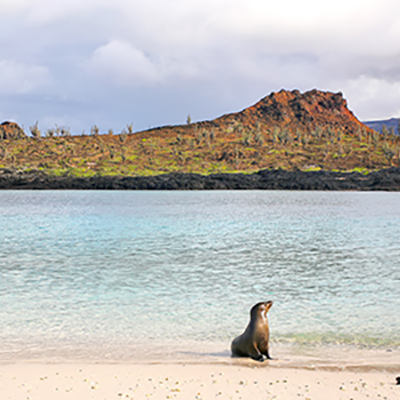
Chinese Hat Islet - Mosquera Islet:
Saturday:
AM: Chinese Hat Islet: (Wet landing) This small islet is located near the southeast coast of Santiago Island. Its name comes from the distinct shape of the islet's summit. This small islet is a great location to view many geological formations such as lava tubes and lava flows.
PM: Mosquera Islet: Located between the islands of Baltra and North Seymour, this reef of rocks and coral is only 160 meters across at its narrowest width. This island has one of the largest populations of sea lions and is home to many shorebirds. There have been occasional reports at this site of orcas feeding on sea lions.
(Breakfast, Lunch, Dinner & Accommodations, Natural Paradise)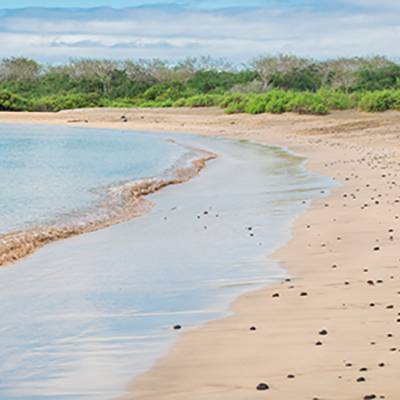
Floreana - Post Office Bay - Cormorant Point/Champion Islet:
Sunday:
AM: Floreana - Post Office Bay: (Wet landing) In the 18th century whalers passing through the islands placed a wooden barrel on Floreana Island for use as an unofficial mail box. The tradition continues today as visitors leave addressed postcards in the barrel and sort through left mail to deliver at home.
PM: Floreana - Cormorant Point/Champion Islet: (Wet landing) This site hosts a large flamingo lagoon where other birds such as common stilts and white-cheeked pintails can also be seen. The beaches on this island are distinct: the "Green Beach", named so due to its green color, which comes from a high percentage of olivine crystals in the sand, and the "Four Sand Beach" composed of white coral.
The Champion Island, named after the whaler Andrew Champion, is a small island located just offshore Floreana Island in the southern part of the Archipelago, considered as one of the most beautiful places on Galapagos for all snorkeling and diving fans, and an excellent opportunity for dolphin watching.
(Breakfast, Lunch, Dinner & Accommodations, Natural Paradise)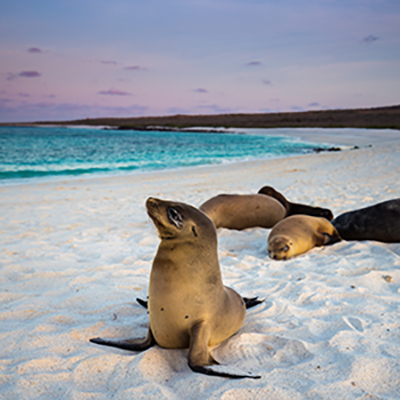
Española - Suarez Point - Gardner Bay/Gardner Islet/Osborn Islet:
Monday:
AM: Española - Suarez Point: (Dry landing) This area is great for spotting blue-footed boobies, albatrosses and Nazca boobies. A beautiful site on the oceanfront, the large waved albatrosses use the cliff as a launching pad. The famous attraction is the magnificent blowhole, spurting water high into the air. This site presents wonderful photograph opportunities.
PM: Española - Gardner Bay/Gardner Islet/Osborn Islet: (Wet landing) Gardner Bay, on the eastern side of the island, is the breeding site of nearly all of the world´s 12,000 pairs of waved albatrosses. It has an ample white sandy beach with a myriad of sea lions, perfect for relaxing. Its rocky shores make this site a great place for diving and snorkeling.
After landing on Osborn Islet, you can walk across a lovely white sand beach among a busy sea lion colony, or swim with sea lion pups. There is excellent snorkeling here as well.
(Breakfast, Lunch, Dinner & Accommodations, Natural Paradise)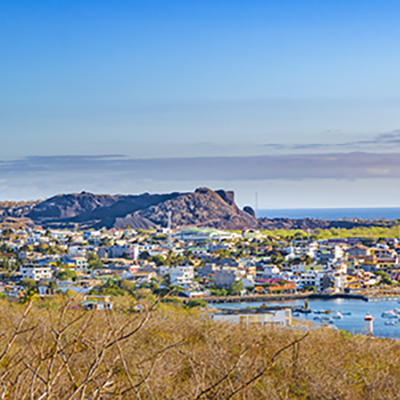
San Cristobal - Lobos Island:
Tuesday:
AM: San Cristobal - Lobos Island: (Dry landing) The name of this island means "Sea Lion Island." This appropriately named island is full of noisy, frolicking, jolly sea lions who will welcome you to their home with open, well, fins. This island also offers great snorkeling opportunities as well as the chance to see blue-footed and Nazca boobies.
After this visit, we will head to San Cristobal Airport for the return flight to the mainland.
(Breakfast, Lunch, Dinner & Accommodations, Natural Paradise) ** Itinerary and inclusions are subject to change

